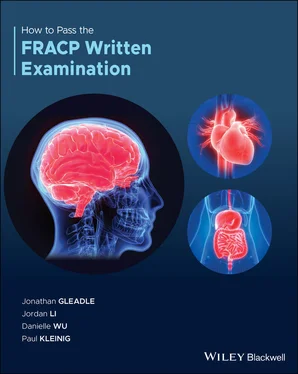|
Hyperandrogenism |
Oligomenorrhoea |
Ultrasound features of PCO |
| Type A |
Yes |
Yes |
Yes |
| Type B |
Yes |
Yes |
No |
| Type C |
Yes |
No |
Yes |
| Type D |
No |
Yes |
Yes |
Phenotypes A, B and C are associated with an increased risk of metabolic syndrome, whereas phenotype D is not associated with an increased metabolic risk as compared with the general population. Phenotypes A and B have higher rates of insulin resistance compared with the general population irrespective of BMI while the other phenotypes do not possess this characteristic, implying that hyperandrogenism contributes to insulin resistance. PCOS is responsible up to 80% of cases of anovulatory infertility. As women with PCOS have greater degrees of insulin resistance and secondary hyperinsulinemia than weight‐matched controls, they are at greater risk of developing long‐term complications including a higher lifetime risk of type 2 diabetes, non‐alcoholic fatty liver disease, metabolic syndrome, hypertension, dyslipidaemia, and possibly vascular complications (coronary artery disease and CVA). Venous thromboembolism is also more common in women with PCOS.
Studies have demonstrated an increased risk of endometrial cancer in women with PCOS but no increased risk of breast cancer in association with PCOS. Evidence has been mixed regarding the association of PCOS and ovarian cancer risk. Multiple studies have also demonstrated a consistent link between PCOS and mental health issues, including an increased prevalence of depression, anxiety, and decreased sexual satisfaction and quality of life.

Escobar‐Morreale H. Polycystic ovary syndrome: definition, aetiology, diagnosis and treatment. Nature Reviews Endocrinology. 2018;14(5):270‐284.
https://www.nature.com/articles/nrendo.2018.24
21. Answer: A
Catecholamines produced by phaeochromocytomas are metabolised within chromaffin cells. Norepinephrine is metabolised to normetanephrine and epinephrine is metabolised to metanephrine. As conversion occurs within the tumour, independently of catecholamine release, phaeochromocytomas are best diagnosed by measurement of these metabolites rather than by measurement of the parent catecholamines.
Plasma fractionated metanephrines can be measured as a first‐line test for phaeochromocytoma. The negative predictive value for this test is extremely high. However, despite a high sensitivity of 96%, specificity of plasma fractionated metanephrine is low at 85%, and falls to 75% in patients older than 60 years and taking multiple antihypertensive medications. One study suggested that 97% of patients with hypertension seen in a tertiary care clinic who have a positive plasma fractionated metanephrine measurement will not have a phaeochromocytoma.
As such, 24‐hour urinary fractionated catecholamines and metanephrines should be performed first after a high level of plasma metanephrine. Specificity is highest for urinary epinephrine (99.9%), followed by urinary norepinephrine and dopamine (99.5% and 99.3%, respectively), and urinary total metanephrines (99.7%). If there is high clinical suspicion and elevated 24‐hour urinary fractionated catecholamines and metanephrines, clonidine suppression test can be used as a confirmatory test.
Plasma catecholamines no longer have a role in investigation for phaeochromocytoma because of poor overall accuracy. The 24‐hour urinary vanillylmandelic acid (VMA) excretion has poor diagnostic sensitivity and specificity compared with 24‐hour urinary fractionated metanephrines.
Biochemical confirmation of the diagnosis should be followed by radiological evaluation to locate the tumour. About 10% of the tumours are extra‐adrenal, but 95% are within the abdomen and pelvis. MRI can distinguish phaeochromocytomas from other adrenal masses: on T2‐weighted images, phaeochromocytomas appear hyperintense whilst other adrenal tumours appear isointense, as compared with the liver. However, MRI lacks the superior spatial resolution of CT. If abdominal and pelvic CT or MRI is negative in the presence of clinical and biochemical evidence of phaeochromocytoma, a metaiodobenzylguanidine (MIBG) scan should be ordered. MIBG is a compound resembling norepinephrine that is taken up by adrenergic tissue. It can detect tumours not detected by CT or MRI, or multiple tumours when CT or MRI is positive.

Neumann H, Young W, Eng C. Pheochromocytoma and Paraganglioma. New England Journal of Medicine. 2019;381(6):552–565.
https://www.nejm.org/doi/full/10.1056/NEJMra1806651
22. Answer: C
Iron deficiency anaemia is a common cause of a falsely elevated HbA1c. HbA1c is a marker of the average blood glucose levels over a 90–120 day period (the average life span of a RBC). This is because haemoglobin, like other plasma proteins, glycate in response to glucose exposure, and the degree of glycation is proportional to the average plasma glucose concentration. HbA1c is subsequently used to both diagnose and monitor diabetes treatment efficacy.
HbA1c is advantageous as there is low biological variability, so HbA1c is relatively stable during states of fasting or fed, well or unwell, and whether a sample is processed quickly or delayed. However HbA1c is also reliant on stable haemoglobin concentration. When this is not the case it can be falsely elevated or depressed:
Factors which falsely decrease HbA1c (expose haemoglobin to less glucose):Decreased average RBC age, i.e. blood loss, haemolytic anaemia, CKD (chronic anaemia with decreased cell survival)Increased RBC turnover, i.e. pregnancy, erythropoietin therapy, chronic liver disease (secondary to splenomegaly)Decreased protein glycation, i.e. high dose vitamin C and E, alcohol, antivirals (e.g. ribavirin), antibiotics (e.g. trimethoprim)
Factors which falsely increase HbA1c (expose haemoglobin to more glucose):Increased average age of RBCs, e.g. aspleniaDecreased RBC turnover, e.g. anaemia secondary to iron deficiency, vitamin B12 and folate deficiency.Increased protein glycation, e.g. iron deficiency anaemia.
In situations where HbA1c is not suitable for monitoring patients with diabetes, alternatives to consider include glucose profiling, total glycated haemoglobin, fructosamine, or glycated albumin.

Sodi, R., McKay, K., Dampetla, S. and Pappachan, J. (2018). Monitoring glycaemic control in patients with diabetes mellitus. BMJ, p.k4723.
https://www.bmj.com/content/363/bmj.k4723
23. Answer: A
This patient has a large symptomatic pituitary tumour and encroachment of surrounding structures resulting in visual field deficit. With pituitary tumours, prolactin levels correlate with the tumour size. In other words, the bigger the tumour size the higher the prolactin level. This patient has a large tumour but only slightly elevated prolactin level relative to the tumour size, so this tumour is unlikely to be a prolactinoma. Therefore, the appropriate management is surgical, not conservative management using cabergoline. In contrast, if the tumour is small but the prolactin level is very high, then it is likely a prolactinoma and a dopamine receptor agonist such as cabergoline treatment should be the first choice.
Читать дальше















